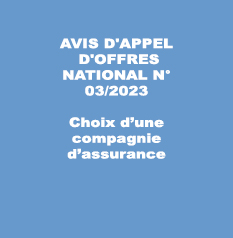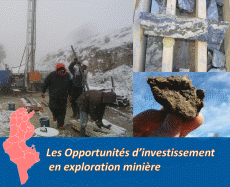| Programme annuel & rapport de suivi technique |
-

Rapport d'activités 2023
-

Programmes Techniques 2024
|
| Géocatalogue |

|
| Appels d'Offres |
-

ACQUISITION DES TICKETS RESTAURANT POUR LE PERSONNEL DE L’ONM
-

CHOIX D’UNE COMPAGNIE D’ASSURANCE
-

ACQUISITION ET MISE EN ŒUVRE D’UN PROGICIEL DE GESTION INTEGRE
|
|
Investir en Tunisie |


|
|
|
|
|
::
Documentation and Editions
>>
Research library
|
| |
|
[
Search by author
]
[
Search keyword
]
[
Search by index
]
[
Search by category
]
|
title of the reference :
|
A conglomeratic, carbonate flow deposit, northern Tunisia: a link in the genesis of pebbly mudstones.
|
|
Publication Date:
|
1979
|
|
Author :
|
Cossey Stephan P., Ehrlich Robert
|
|
Catalogue type :
|
Livre
|
|
Catalogue reference :
|
Vol. 49, N°1 (USA) J. Sediment. Pet. Vol. 49, N°1 A conglomeratic, carbonate flow deposit, northern Tunisia: a link in the genesis of pebbly mudstones. " A Jurassic submarine mass movement deposit is exposed on the mountain Bou Kornine in N. Tunisia. It is up to 75 m thick and is part of a carbonate slope sequence. Although it displays some debris flow deposit characteristics, it is shown to be the result of several mass movement mechanisms. An early turbulent stage when clasts were mixed in a medium of lime mud was followed by an intermediate stage of decreased turbulence when clasts settled through the matrix and matrix particles sedimented with concomitant dewatering. During the final stages when matrix competence increased rapidly, clasts were frozen before they had completely settled. Mass movement downslope produced thee vertical and lateral gradational zones : (1)Zone A, the basal 5-10 m, containing mostly clasts of radius between -6 and -8 phi (6.4 to 25.6 cm)in contact, (2)Zone B, a central matrix-supported ""coarse tail"" graded zone consisting mostly of clasts of radius -4 to -6 phi (1.6 to 6.4 cm), (3)Zone C, an upper consisting of matrix-supported clasts of radius less than -4 phi (1.6 cm). Zone B was used as an indicator of lapsed time from the intermediate stage of decreased turbulence to the final of increased matrix competence. Calculation of this ""resedimentation time"" indicates two stages of development : (1)Uniform ""freezing"" of the basal 30 m of the flow less 1 minute after decreased turbulence: (2)linear increase in resedimentation time above 30 m, causing the top of the flow to remain mobile for up to 20 minutes. Multistage resedimentation coupled with the gradual withdrawal of large clasts from the system can result in the genesis of a downslope pebbly mudstone facies."
argilité ; galet ; Jurassique ; granoclassement ; régime turbulent ; sédimentation ; Tunisie ; Tunisie Nord Orientale ; Bou Kornine Cossey Stephan P. Ehrlich Robert Roches Sédmentaires, Sédimentologie
|
|
Indexation decimale :
|
Roches Sédmentaires, Sédimentologie
|
|
Keywords :
|
argilité ; galet ; Jurassique ; granoclassement ; régime turbulent ; sédimentation ; Tunisie ; Tunisie Nord Orientale ; Bou Kornine
|
|
Summary :
|
" A Jurassic submarine mass movement deposit is exposed on the mountain Bou Kornine in N. Tunisia. It is up to 75 m thick and is part of a carbonate slope sequence. Although it displays some debris flow deposit characteristics, it is shown to be the result of several mass movement mechanisms. An early turbulent stage when clasts were mixed in a medium of lime mud was followed by an intermediate stage of decreased turbulence when clasts settled through the matrix and matrix particles sedimented with concomitant dewatering. During the final stages when matrix competence increased rapidly, clasts were frozen before they had completely settled. Mass movement downslope produced thee vertical and lateral gradational zones : (1)Zone A, the basal 5-10 m, containing mostly clasts of radius between -6 and -8 phi (6.4 to 25.6 cm)in contact, (2)Zone B, a central matrix-supported ""coarse tail"" graded zone consisting mostly of clasts of radius -4 to -6 phi (1.6 to 6.4 cm), (3)Zone C, an upper consisting of matrix-supported clasts of radius less than -4 phi (1.6 cm). Zone B was used as an indicator of lapsed time from the intermediate stage of decreased turbulence to the final of increased matrix competence. Calculation of this ""resedimentation time"" indicates two stages of development : (1)Uniform ""freezing"" of the basal 30 m of the flow less 1 minute after decreased turbulence: (2)linear increase in resedimentation time above 30 m, causing the top of the flow to remain mobile for up to 20 minutes. Multistage resedimentation coupled with the gradual withdrawal of large clasts from the system can result in the genesis of a downslope pebbly mudstone facies."
|
|
Exemplaries :
|
TU489
|
|
|
|
|
|
|
|



